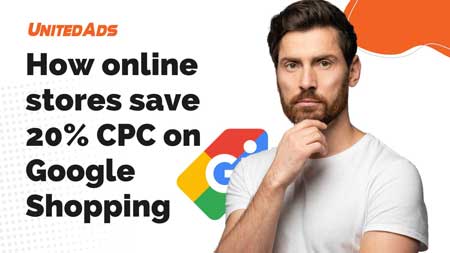Whether you are a small local business or a global corporation, understanding and applying search engine marketing can make all the difference in your online success.
This comprehensive guide to search engine marketing will help you understand the basics, learn key strategies, and implement best practices to strengthen your online presence and increase sales. We will deal with both main components of search engine marketing: the
search engine optimization (SEO)
and the
search engine advertising (SEA)
. Let’s take a deep dive into these exciting topics and find out how you can optimize your website for search engines and launch targeted advertising campaigns.
In this guide, we will show you how to improve your visibility in search results, optimize your website for relevant keywords, create high-quality content, run effective ads, and analyze and optimize your campaigns. Whether you’re a beginner just entering the world of search engine marketing or an experienced marketer looking to expand your knowledge and hone your skills, you’ll find valuable information and practical tips to help you achieve your goals.
Prepare to harness the power of search engines and take your online presence to the next level. Let’s dive into the fascinating world of search engine marketing and discover the key strategies to succeed online!
What is search engine marketing?
Search engine marketing (SEM) is a form of online marketing that focuses on marketing websites in search engines. It includes both SEO (Search Engine Optimization) and SEA (Search Engine Advertising).
SEM refers to all measures taken to improve the visibility of a website in search engine results. This can be done by optimizing the website for organic search results (SEO) or by placing paid ads (SEA).
SEO focuses on improving a website’s organic ranking in search engine results. Optimizing the website structure, using relevant keywords, creating quality content and building backlinks will try to improve the ranking in the unpaid search results.
SEA, on the other hand, refers to paid advertisements in search engines. Companies can place ads that appear above or next to organic search results. These ads are usually marked as “advertisement” or “sponsored”. By choosing the right keywords and setting the budget, companies can advertise their products or services in a targeted manner, increasing their visibility and reach.
Search engine marketing allows companies to target their audience and strengthen their online presence. It is an effective way to drive more qualified traffic to the website and increase brand awareness. By combining SEO and SEA, a comprehensive search engine strategy can be developed to make the most of the potential of search engines as a marketing channel.
What role does search engine marketing play in the marketing mix?
Search engine marketing (SEM) plays an important role in the marketing mix of many companies. It enables companies to strengthen their online presence and target potential customers. Here are some reasons why search engine marketing plays a significant role in the marketing mix:
- Increased visibility: Through search engine marketing, companies can increase their visibility in search engine results. Both SEO and SEA enable companies to be present in relevant search queries and draw potential customers’ attention to their products or services.
- Targeted customer approach: SEM enables companies to select specific keywords or search terms and advertise for them. This allows them to accurately reach their target audience and target their message to potential customers who are already interested in the products or services they offer.
- Measurability and control: Search engine marketing offers high measurability and control over results. Companies can track exactly how their ads or organic search results are performing, how many clicks they are getting, and what the conversion rate is. This makes it possible to analyze the effectiveness of the campaigns and make adjustments as needed.
- Flexibility and scalability: SEM enables companies to flexibly adapt and scale their marketing activities as needed. They can increase or decrease their budget for ads, add or remove new keywords, and continuously optimize their strategy to get the best results.
- Complement other channels: Search engine marketing complements other marketing channels such as social media, content marketing, and email marketing. By combining different channels, a holistic marketing strategy can be developed to maximize reach and target potential customers on different platforms.
Search engine optimization (SEO) – part of SEM
Search engines like Google or Bing scour the Internet day and night and categorize all pages thematically. Search engine optimization therefore means helping Google & Co. to identify what a page is about as easily as possible.

Find the right keywords
The keyword thing sometimes sounds confusing for SEO beginners. A keyword is actually just another word for a search term. Think about what words or phrases potential customers might Google when searching for products like yours. Use exactly these then on your page.
Look for keywords that are not used by every second online shop. What makes your offer special? It is unlikely that you will ever be at the top of the search term “women’s shoe”. “Nuremberg shoe store” would be more promising.
Create attractive content
In the early days of Google, it was particularly important to have as many keywords as possible on the page. This sometimes resulted in nonsensical, barely legible texts. Search engines are much smarter today. Write clearly and comprehensively. Also use synonyms for the keyword.
Also important: A sensible structure. Include logical paragraphs and subheadings.
Backlinks for more relevance
Google tries to suggest helpful and trustworthy websites to its users. Therefore, pages are rewarded that are linked, i.e. recommended, by a particularly large number of others.
Basically: Backlinks from topic-related and influential sites are more relevant. By the way, buying links does absolutely nothing. Google now recognizes attempts at manipulation. Instead, ask customers, business partners or bloggers from your industry whether they can recommend your site to others.
Technical SEO
In addition to content, there are numerous technical reasons that ensure a better Google ranking:
- fast loading times,
- secure data transmission (encryption),
- the optimization of the website for mobile devices.
That a website is technically flawless is the basic requirement in order to land in the top places. Make sure that your site complies with the latest technology standards.
Also google B2B customers
Whether machines, spare parts, consumables, tools, work materials – many companies have buyers who take care of the procurement of such goods. Often enough they still have to struggle through thick paper catalogs or search through Excel lists. It is much easier and faster with an optimized website.
,,Even if you are targeting B2B customers, you should always ask yourself: what is my target group looking for?”,
explains search engine expert Alexander Sperber.
Since Google always shows the most useful page on a topic at the top, you should design your website to be especially informative for your potential customers.
The success of search engine optimization (SEO) measures can also be analyzed quite easily, e.g. with the Google Search Console. In the Search Console, you can see which search queries people use to get to your website. You can analyze the impressions, clicks and the position of your website in the Google search results.
However, Alexander Sperber warns against viewing SEO as a one-off project:
“A lot of customers think you deal with it for a few months, then you’re #1 and you don’t have to worry about it for the next few years”
SEO, however, is cutthroat competition, he said.
No matter what great things I have done, if my competitor does better at that moment, he will pass me,
says the SEO expert.
Google Ads as a component of search engine marketing
In addition to SEO (Search Engine Optimization), i.e. optimization for normal search results, there is another discipline: SEA (Search Engine Advertising).
Search Engine Advertising is about the paid ads in Google or Microsoft’s Bing search.
Here, companies can buy advertising space and thus increase their visibility on the web.
, “But why should I spend any more money on online ads when I already have a website and a Google My Business listing?”
The answer: The Google Ads ads are still displayed above the regular Google results. Entrepreneurs who rely only on SEO are therefore not always visible at first glance. You have to hope for Internet users who keep scrolling down. It’s different with ads – they are immediately present.
Google Ads for Small Business
SEA is a big field. Corporations invest five to six-figure sums a month. SEA agencies keep an eye on the accounts, improve the advertising texts, search for new keywords and adjust the advertising strategy.
A retailer cannot keep up with either budget or time. But how do you participate anyway? A sensible solution in many cases:
Local SEA, i.e. local search engine advertising. With regional advertisements, costs and effort remain manageable. The strong geographical limitation to a city district, a postcode or a district as well as advertising texts with a strong local reference, which can even be written in dialect, enable entrepreneurs to lure customers into the shop on their doorstep.
With 500 euros, a company in the Local SEA can already win some new customers. With the ads you are directly present on Google. You have maximum control over the content and get immediate feedback on whether or not the content appeals to new customers.
Finding a suitable Google Ads agency is often not easy for small businesses.
For specialized Google Ads agencies, only projects with a four-digit advertising budget per month are often worthwhile. Google has recognized the problem and is investing in the development of automated ads for micro-businesses.
If you use a profile on Google My Business, you will already be offered the machine-generated ads. The program writes the advertising texts based on the set information about the company and places the ads when relevant keywords and the city are searched.
The advantage: The time required for entrepreneurs is limited, and they can also regulate the advertising budget on a monthly basis. If Google changes the specifications for the ads, they are automatically implemented. The disadvantages: loss of control and fewer opportunities to exploit the business niche and set yourself apart from the competition.
This is how Google Ads work
The ads at the search engine giant are called Google Ads. They are displayed above the normal search results. Advertisers pay for individual keywords, the keywords. If an Internet user searches for these words, the advertisements are shown to him.
The Google Ads auction
Companies do not pay a fixed amount for ads, only for the Internet users who actually clicked on the ad. When creating the ad, you need to specify how much you want to spend at most.
The prices are created through a sophisticated auction system. Depending on the keyword and industry, there are many competitors who all want to be found with their ads.
Those who are willing to pay the most for a potential customer’s click land higher up. The amount per click can range from a few cents to several euros.
But not only the price determines the position of the advertisement. The ads are also judged by Google’s quality factor.
The quality factor
The quality score is a rating of the relevance of the keywords, ads and landing pages on a scale from 1 to 10, where 10 means very good. Google assesses various criteria for this:
- The expected click-through rate, i.e. what percentage of all users to whom the ad is presented will click on it.
- The ad relevance, i.e. the thematic match of keywords, ad texts and content on the target page.
- The quality of the landing page, for example, very relevant content or fast loading times.
A high Quality Score ad costs less. The opposite applies: If an ad is clicked less than the competition, it loses quality and more and more money has to be offered for the keyword.
The elements of the Google Ads
For a high quality score, the Google Ads ad should be filled out as completely as possible. There are 30 characters available for the headline and up to 90 for the description. Three different headlines and two description texts can be entered.
Google Ads will then automatically test different combinations over time and determine which will produce the best results. Once you have found out which ad appeals to your customers, you can also use the text for the search engine optimization of your website.
Another tip: If the link to your landing page is very long or cryptic, Google Ads offers to display a catchy and easy-to-read URL instead:
www.beispielshop.de/laufschuhe
instead of www.beispielshop.de/?product=4878
Write good Google Ads ads
The texts should be formulated from the user’s position and answer the following, advises SEM expert Deutschländer:
Who am I? What am I offering? Who am I offering this to? Why is my offer better than the competition?
Instead of just writing “lawyer”, it is better to specifically choose “specialist lawyer for labor law Berlin”. Adjectives can also be useful: ,,trustworthy specialist lawyer for labor law in Munich, experience since 2001″.
Google’s guidelines must be observed when writing. Ads with emojis or overused symbols like ,,B*ü*c*h*e*r” will not be shared at all. You can find an overview of the rules here.
Local targeting of Google Ads ads
If you want to target local customers, you have to use geotargeting in your Google Ads account. ln the campaign settings, you can choose between proximity search, specific addresses and postal codes, or very specific locations such as universities.
If you don’t feel like going to the outskirts for a job, you can exclude places too. By default, an ad is played when people Google for the region but are not currently there.
It is therefore advisable to activate the option ‘Users in my target regions’ under Settings and Advanced location options. This means that only people on site who can come to the store receive the advertisement. That saves valuable budget.
Constant change in Google Ads
Google is constantly changing the formats and ratings. Then the displays have to be adjusted. And a well-running ad can suddenly collapse because the competition is doing something better. You always have to be on your guard or rely on automated ads to reduce the workload.
Would you like more in-depth information about Google Ads? Then we have the right contribution for you: How Google Ads works
The right mix of SEO and Google Ads leads to success
In search engine marketing, it is important to find the right mix between SEO and Google Ads. Search engine optimization builds the foundation for your website to organically show up higher in search and for users to stay on your site as well.
With Google Ads you can provide additional visibility for your website and attract even more users to your website. For example, you can promote important areas of your site in addition to your good organic results, or promote parts of your site that are not yet performing as well organically.
With balanced SEM, you can promote your website as well as your business online extremely successfully and mutually offset various weaknesses in both areas.
Search engine marketing with Google My Business
Google My Business is a central service from Google that can be used to control all major Google services for companies and especially local companies. With a complete company entry on Google My Business, company information can be bundled and updated in the Google search, in Google Maps or on Google+.
In addition to all important information such as contact details and opening times, companies should also write a meaningful descriptive text. Use it to include terms that potential visitors from your area might search for.
There is also the possibility to write small entries with pictures. In this way you can draw attention to events or new products.
Analyze the statistics in your business account regularly. There you can see which search terms users used to find out about your company or which images were clicked on particularly often.
The Google competitors Apple Maps and Microsoft Bing Places also offer the possibility of entering company entries in their map services. Google has a market share of over 90 percent in Germany, but it still makes sense to use the other providers as well. The Apple map service is always preinstalled on iPhones and Microsoft Search on Windows computers. Registration is easy and the company profile can be created in a few minutes: mapsconnect.apple.com and bingplaces.com
Find even more Google My Business tips here:
To the article
AI and search engine marketing
The role of artificial intelligence (AI) and machine learning in search engine marketing has evolved greatly in recent years, offering companies exciting new ways to optimize their search engine strategies and achieve better results. Here are some ways these technologies can be used:
- Automated keyword research: AI-driven tools can analyze large amounts of data and identify relevant keywords that have the potential to improve a website’s visibility in search results. CMOs and marketers can use these tools to refine their keyword strategy and target relevant terms.
- Content optimization: Machine learning can help improve content effectiveness. By analyzing big data, algorithms can identify trends and patterns to understand what type of content resonates best with users. Companies can use this information to create high-quality, relevant content that ranks well with search engines and engages users.
- Automated ad optimization: AI-driven search advertising platforms can continuously monitor, analyze, and optimize ad campaigns. By analyzing data in real time, companies can improve ad performance, manage budgets effectively, and maximize return on investment.
When should companies hire a search engine marketing agency?
Companies should usually hire a search engine marketing agency if they either do not have the in-house expertise or resources to run effective search engine marketing campaigns. Here are some situations where working with an agency can be useful:
- Lack of expertise: If the internal team does not have sufficient knowledge and experience in search engine marketing, hiring an agency can be beneficial. An agency brings specialized knowledge and expertise to make strategic and tactical decisions to achieve the best possible results.
- Time constraints: Running a successful search engine marketing campaign requires time and commitment. If the internal team is already busy with other projects or tasks, hiring an agency can reduce the burden and ensure that search engine marketing is done continuously and effectively.
- Access to tools and technologies: Search marketing agencies often have advanced tools and technologies that companies may not have available themselves. These tools can help with data analysis, keyword research, ad optimization and other important aspects of search engine marketing.
- Continuous optimization: Search engine marketing requires continuous monitoring, analysis and optimization to achieve optimal results. An agency can perform these tasks on a regular basis and ensure that campaigns meet the ever-changing demands of search engines and the marketplace.
- Specific goals or challenges: If a company has specific search marketing goals, such as entering new markets, increasing ROI, or fighting competitors, an agency can use its experience and expertise to help develop and implement customized strategies.
Hiring a search engine marketing agency can help businesses improve their search engine strategies, get better results and use their resources efficiently. It is important to carefully select an agency and ensure that it has the experience, expertise and resources to meet the specific needs and goals of the business.
Conclusion: Search engine marketing rich in opportunities
Search engine marketing has different facets: Google My Business as a digital business card, website optimization (SEO) or paid advertisements (Google Ads).
Invest your time in all three areas of SEM, and your chances of getting ahead and staying there in the long run are definitely higher than doing nothing at all or doing it half-heartedly.
Be aware, however, that search engine marketing can’t be done on the side. SEM is a time-consuming and lengthy topic that requires more than a few weeks of attention.
If you still want to tackle the topic of search engine marketing, it can be helpful to get an SEM agency on your side. This can support you in an advisory capacity or even completely take over your SEM for you.







